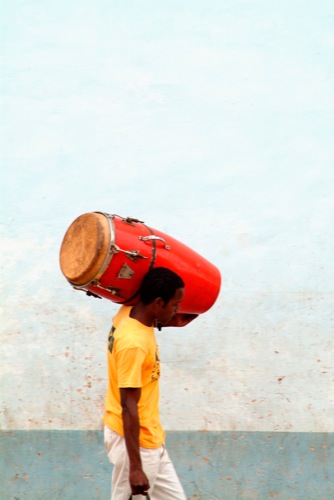
It is the elusive prize that many American travelers dream of, but few ever attain. Cuba — an island nation 90 miles off the coast of Florida — has been off limits to Americans for more than 50 years. Those that manage to visit treat a Cuban stamp on their passport as a badge of honor. This summer, I became one of them.
Until recently, there have been few legal ways to visit Cuba. The United States’ economic embargo against Cuba is aimed at Fidel Castro and his communist government but has also restricted American citizens from vacationing there since the middle of the 20th century. In 2011, though, the Obama administration created an exemption that allows groups of Americans to visit Cuba on special “People-to-People” tours.
By the government’s definition, these People-to-People tours must consist of a full-time itinerary of cultural interactions with the Cuban people. The Treasury department’s Office of Foreign Asset Control gives licenses to American tour companies seeking to offer these tours after a lengthy application process. U.S. government officials must review and approve a company’s proposed Cuba itineraries before a license is granted.
Today, several dozen American tour companies have received licenses to take groups to Cuba and have found overwhelming demand for this new product. I was fortunate enough to secure a spot on a tour last summer. Although the weather was hot, the amazing history, art and music I discovered on this tropical island made my nine-day trip to Cuba more than worthwhile.
Stark Differences
When I arrived with my group in Cuba, I was immediately struck by some of the country’s most iconic features, such as its beautiful Art Deco architecture and the fleet of classic American automobiles that fill the streets of Havana. But in addition to these memorable features, I also noticed the effects of the Cuban Revolution and subsequent socialist government, about which I would learn much more throughout the course of the trip.
It’s no secret that the Cuban Revolution of the 1950s and the subsequent communist government of the country created a strained relationship between Cuba and the United States. And although Americans count on our independent media and thorough scholarship to give us an accurate account of the revolution and its impact on life in Cuba, there is an alternate version of this history that we haven’t heard — the official story told by the Cuban government.
During our tour, we visited several places that present the official Cuban version of history. In Havana, Revolution Plaza has a large monument dedicated to the fighters who joined Castro in overthrowing the previous government. In the center of the city, the Revolution Museum displays documents, weapons and vehicles used in the struggle. The museum is housed in the former presidential palace, which was the home of the country’s leaders from the 1920s through the 1950s.
In nearby Santa Clara, we stopped to visit the Che Guevara Memorial, a museum and monument that tells the story of one of Cuba’s most beloved revolutionary leaders. Guevara is entombed in a mausoleum inside the memorial.
The Cubans present their version of history in a glowing and effusive light. But on close examination, you see that the facade is full of cracks. Even those icons of Cuba — the beautiful Art Deco buildings and classic American cars — are leftovers from the early 1900s, when capitalism and American tourism had Cuba’s economy humming. Although they look good from a distance, the beautiful cars and beautiful buildings are constantly on the verge of falling apart.











